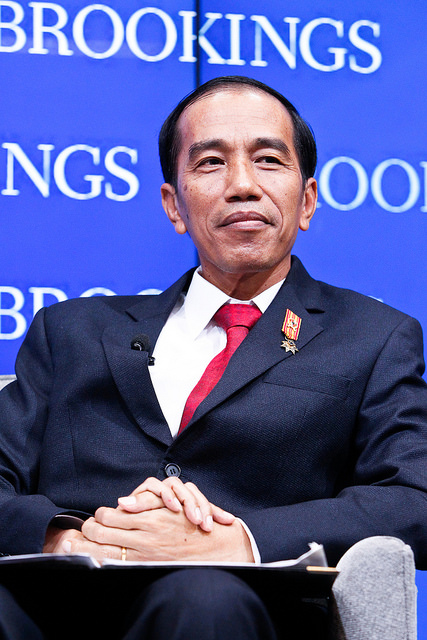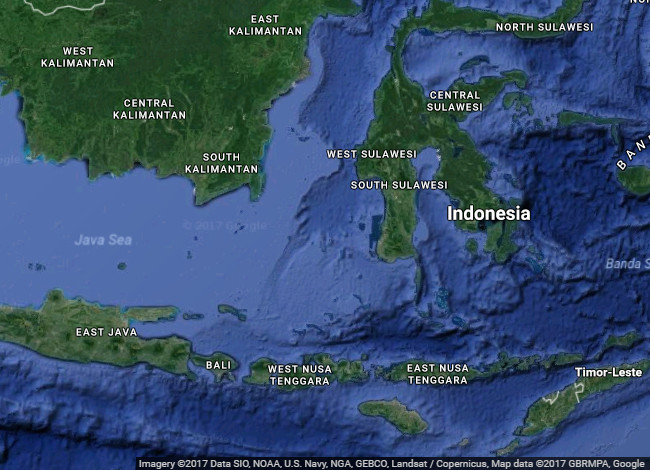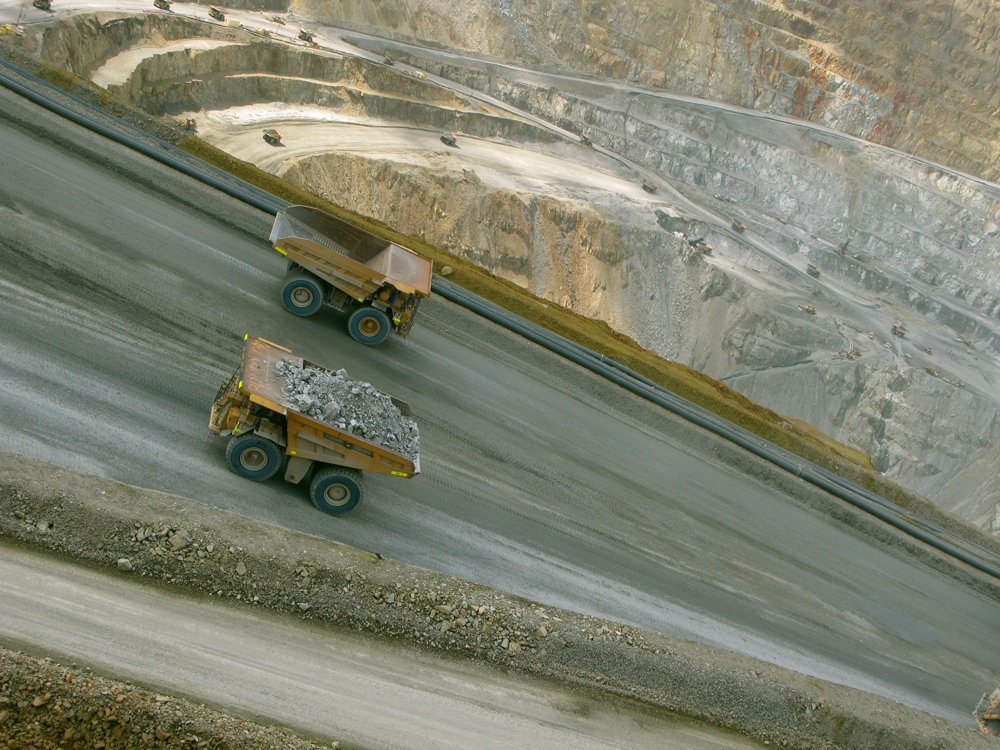Mining law changes in decentralising Indonesia raises new challenges and opportunities for local communities
Mining and reform
Indonesia’s extraordinary resource wealth has, for a long time, been a source of great interest and hope, spurring dreams of riches and economic benefit, holding promises of transition out of poverty across the archipelago. It is thus not surprising that, ever since the Suharto regime took power in 1966, mining has been a central element of government development ambitions. Prior to the end of the resource boom, Indonesia was among the world’s largest exporters of minerals. That foreign corporations and their capitalist cronies were the major exploiters of Indonesia’s mineral wealth was one of the critiques that brought down the Suharto regime.
In the post-Suharto period, talk of reform to the conditions for foreign miners finally resulted in the passage of Law No. 4/2009 on mineral and coal mining. This law ostensibly set the mining sector on a resource nationalist path. Mineral exploitation under the New Order was regulated through contracts of work (CoWs) which gave foreign companies long-term access to vast concession areas. The law also added fiscal certainty through setting royalties and taxes as well as conditions for divestment of minority shareholdings on the Jakarta stock exchange.
The fundamental restructuring under Law No. 4/2009 required that foreign and domestic mining be conducted under business mining licences (Izin Usaha Pertambangan, or IUP). All existing mining contracts, including contracts of work for foreign large-scale projects, were also to be changed to IUP. Under the licence system, the state has more control and can force companies to pay more tax, increase royalty rates and introduce more stringent divestment obligations. The new law was enacted as the landscape of mining investment changed dramatically following the implementation of regional autonomy. District governments exercised more authority over local resources and directly enjoyed the ensuing revenue.
The law also banned export of unprocessed ore after 31 January 2014, aiming to pressure resource companies to build smelters so Indonesia would enjoy the economic benefits of processing. The government had also placed a burdensome tax on the export of unprocessed copper. The tax was intended to pressure US mining companies Freeport-McMoRan (Freeport) and Newmont – which together account for 97 per cent of Indonesia’s copper exports – to invest in smelting facilities. However, nickel and bauxite exports collapsed, and from 2013, the global resources boom went into decline. In January 2017, the government revised the mining law, relaxing the ban for copper as well as nickel and bauxite.

The Joko Widodo government relaxed the export ban in 2017. (Brookings Institution)
The 2009 law ostensibly would increase returns from the exploitation of Indonesia’s massive mineral wealth back to the country. However, does the new regulatory regime – coupled with the political and administrative changes associated with decentralisation – mean that there are new opportunities for Indonesian citizens living in the remote regions that usually host mines? What has been the impact of these changes in legal and political frameworks on the interface between mining enterprises and local communities? Are there new possibilities for the mitigation of negative social and economic impacts in mining-affected communities?
The short essays in this special issue address these questions, looking at the intersection of the global, the national and the local in some of Indonesia’s more remote regions, recently affected by the global resources boom and national political reform.
Corporate social responsibility
The way global corporations operate are increasingly impacted by scrutiny from international organisations, as well as global, national and local NGOs. This is particularly true of the mining industry. In the 1980s and 1990s, the mining industry appeared to operate with very little regard for human rights abuses or environmentally destructive practices. In response to criticism of the industry, in 2001 the World Bank held the massive Extractive Industries Review to assess the mining projects they had supported. At the same time, the industry itself launched the Mining, Minerals and Sustainable Development (MMSD) project to study how to reform the industry and suggest ways to hold corporations responsible to both the environment and local communities.
The World Bank created a new model for how mining should be institutionalised, promoting a ‘social development model’ for poverty alleviation and community collaboration. However, some critics suggest that concerns over environmental destruction and community rights continue to conflict with national and global attempts to raise productivity to create wealth and reduce poverty. This tension is evident in local settings, where community struggles are affected by global ideologies and conflicts, and nowhere is this more apparent than in areas where there is mining.
Rich mineral resources are still to be found in the margins of the developing world, where often political elites are not concerned about upholding global best practices – either towards the environment, or towards community rights. Companies who work in these locations, therefore, are not always pressured to follow best practices of corporate social responsibility.
Since 2000, however, the mining industry itself has undertaken extremely thoughtful and frequent reviews of its practices, and this is reflected in the numerous reviews and best practice standards that have helped create indicators and suggested regulations for the industry.
Arguably, these practices do not appear to have been well absorbed into the framework that the Indonesian government uses to review mining and candidate corporations in mining licence applications. Yet resources for setting principles and guidelines are readily available for when companies, governments or civil rights groups plan for natural resource extraction. Providers of such resources include the Global Reporting Initiative, the Extractive Industries Transparency Initiative, the Voluntary Principles for Security and Human Rights Framework, the IFC Performance Standards of the World Bank Group, the ICMM’s Sustainable Development Framework, the UN's Guiding Principles on Business and Human Rights, the OECD Guidelines for Multinational Enterprises, the Akwe-Kon Guidelines on Biological Diversity, the Framework for Responsible Mining and the Natural Resource Charter.
At the same time, and in line with the move to online communications, no corner of the world is immune to the scrutiny facilitated by social media. Instruments such as the 2000 UN Global Compact and the 2007 United Nations Declaration of the Rights of Indigenous Peoples have led to voluntary industry codes of conduct for Free Prior and Informed Consent (FPIC) of affected populations. In the Indonesian context, a world-first clause requiring expenditure on corporate social responsibility in the law on limited liability companies (Law No. 40/2007) has also set new legal and political conditions on the operations of mining companies.
Decentralisation
The other important change in the communities that we are looking at in this special issue has been decentralisation and increasing administrative sub-division (pemekaran). Law No. 23/1999 provided that 64 per cent of land rent, 32 per cent of royalties, and 80 per cent of revenues generated by mining should remain in the districts. Before the 2009 mining law was implemented, newly empowered district heads issued mining licences (Kuasa Pertambangan, or KP) for people’s mining (tambang rakyat), separate from licences for small-scale projects by national and foreign companies. Under Law No. 4/2009, all mining became subject to the same mining license or IUP.
However, despite the uniformity of the system, this re-regulated mining landscape has become very messy, since in many places there are overlapping licences. All of the older contracts have not yet been converted, so there are licenced small industrial mines as well as people’s mining operating in the CoW areas of foreign investors.
The resources boom led to an explosion of mining activities, much of it in small-scale mining even as delays in passage of the long-promised mining law lead to a downturn in foreign investment. Some of the small-scale mining is licensed under the old instrument, the KP, and much of it is illegal.
Mining Indonesia
The articles in this edition examine the complexity of this mining landscape in Indonesia. Some look at the national-level political and economic implications of industrial mining, while some focus more on the issues opened under the reforming political landscape for community mining.

The articles in this edition cover a number of cases in eastern Indonesia, including in the regions of Kalimantan, Nusa Tenggara, and Sulawesi. (Various; full credits in image)
Eve Warburton analyses the politics behind the most recent revision, in 2017, to the 2009 mining law, questioning the premise that this revision is a turn away from resource nationalism.
Several articles focus specifically on one very old mine site in South Sulawesi: the nickel mine opened during the Suharto era by PT Inco, which was recently taken over by a Brazilian company, PT Vale.
Arianto Sangadji analyses the political economy of large-scale investment questioning its nationalist potential, presenting a critique of the negative impacts of its profit-driven investment.
Ryan Edwards addresses the impacts of resource extractive projects and welfare in affected regions, and finds mining wanting in its impact in local communities in comparison to palm oil.
Kathryn Robinson asks if the changed legal and administrative frameworks have impacted on the way foreign investors interact with local communities in this South Sulawesi province famous for nickel.
From a different perspective, Sulviyani Suardi provides a local study of the way the head of East Luwu District, South Sulawesi, has used the direct revenue flow from mining, opened by decentralisation, for local development.
Moving to another province not long associated with the extractive industries, East Nusa Tenggara (NTT) to the south, we get a very different picture of community reactions to mining, and contrastive positions on what people feel is the likely benefit of mining in this highly archipelagic province.
Max Regus reports on the successful community opposition to mining development in Flores that has been championed across the province by the Catholic Church, while Maribeth Erb analyses this opposition in the context of local support for the alternative and competing economic development of tourism. Erb also questions tourism, seen as the main hope for NTT, as perhaps better compared to mining as an alternative ‘extractive’ industry.
The global resources boom encouraged an explosion in small-scale mining and Kuntala Lahiri-Dutt explores this global economic phenomenon, with a negative view of the possibilities of this economic endeavour for rural populations.
However, several of the ethnographic studies of small-scale mining enterprises present a more positive view of the possibility of mining as a livelihood option for small communities.
Semiarto A Purwanto finds that small-scale miners in one Kalimantan community were able to progress from unprofitable agriculture to profitable gold mining after a large company withdrew.
Hannah Ling examines the role of manganese mining in the mix of rural livelihoods in NTT.
Andrew McWilliam explores multiplier effects of a gold rush in another poor rural area, Bombana, in Southeast Sulawesi.
Small-scale gold mining, however, tends to be poorly regulated; Omar Pidani and Fitrilailah Mokui report on the potential catastrophic consequences for health and environment from mercury use in extracting gold in Bombana.
Collectively, the articles tease out the complexities of the mining sector in the political economy of Indonesia, especially in relation to rural livelihoods in the era of decentralisation. Authors give diverse accounts, dealing with negative impacts as well as identifying paths that provide possibilities for community benefit. These essays, therefore, offer new insights into what various types of mining might mean as a livelihood option for rural communities in still-remote areas of Indonesia.
Kathryn Robinson (kathryn.robinson@anu.edu.au) is Emeritus Professor of Anthropology in the School of Culture, History and Language at the ANU College of Asia and the Pacific.
Maribeth Erb (socmerb@nus.edu.sg) is an associate professor of Anthropology in the Department of Sociology in the Faculty of Arts and Social Sciences at the National University of Singapore.
